Installing the washing machine: choice of location and connection peculiarities
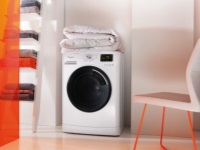
After purchase of such necessary device in a household, as automatic washing machine, it is necessary to install it correctly. For this purpose it is not necessary to call specialists, because you can handle this task yourself. But before you install the machine with your own hands, be sure to clarify whether it will not affect the warranty on the product.
Choosing a place
In modern apartments, a place for the machine is provided even during the design, taking into account the water supply, power supply and drainage device.
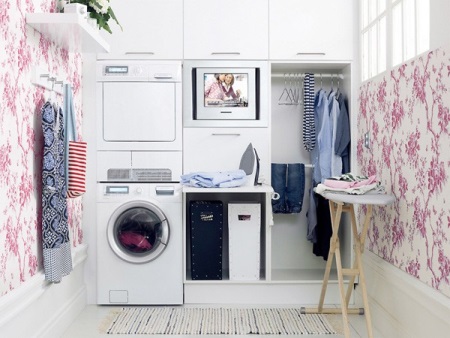
In older buildings, the place has to be allocated in the bathroom, kitchen or even in the bedroom, if it is adjacent to the bathroom. Installing the machine in the bathroom, the equipment will be affected by high humidity. This can turn into the appearance of rust, oxidation of contacts, and damage to the housing. In other rooms, these troubles do not threaten the device.
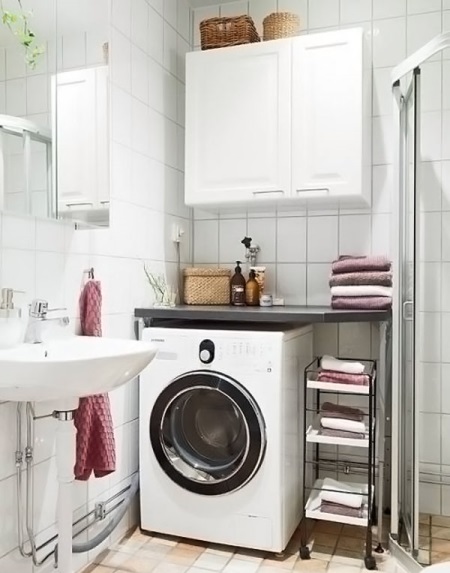
The site should always be flat. If there is a slope, it levels out by changing the adjustable feet. Screwing the feet to the machine, use a level, then you will be able to see which leg should be shorter and which should be lengthened.
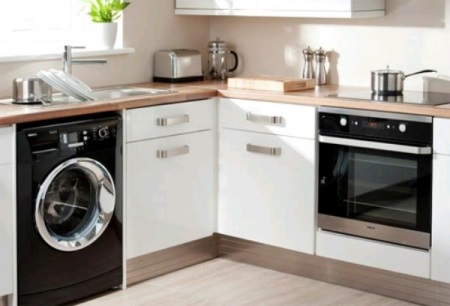
When selecting a location for the machine, it is important to consider the size of the machine. Sometimes the choice of the machine is based on the available space - the size of the space for appliances measured in advance, and then guided by them, choosing a model in the store. If you are not constrained by space, you can choose any option of washing machines.
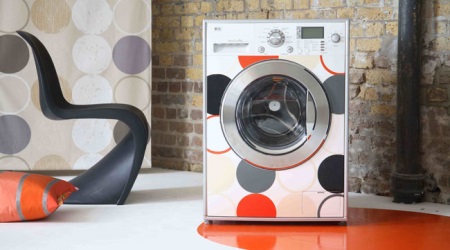
Measuring the height and width of the place for the washing machine, and take into account the surface of the walls. If dents or convex areas, the technique can stand crooked or will not fit. From the measurements you need to subtract 1 cm, so as not to make a mistake with the size of the unit when buying. It is desirable that on the sides of the technique to leave a free space of 2 cm, and at the back left 5 cm. Contact between the machine and the wall or furniture is not recommended.
Unpacking
After unpacking the box with the machine carefully inspect the housing, trying to identify scratches and damage that may appear on the machine during transport.
If you find traces of improper transportation (paint chips, dents, etc.), feel free to demand a replacement. You paid for a new machine, so it should be delivered to your home undamaged.
If the machine is in order, sign for delivery and proceed to the first phase of installation. It consists of removing the transport bolts from the back of the case, which fix the tank. They are necessary for safe transport of the unit because they prevent the tank from dangling inside and damaging the machine's components from the inside. Bolts that are not removed prevent the tank from moving freely, and turning the machine on like this can cause it to break down.
Use pliers or a wrench to unscrew the bolts. The holes that will remain after such manipulation, close the plugs made of plastic. Such plugs are included with the manual and other parts.
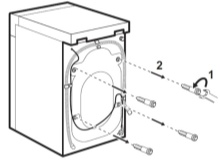
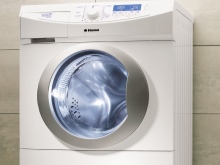
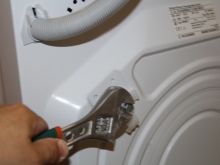
It is better to keep the bolts, because they may come in handy when transporting the machine later (for example, when moving). By screwing them in instead of plugs, you will protect the machine from damage when moving.
Installation according to safety rules
The power cord must have a grounding wire. This is replaced by a ground wire in many homes. The plug should be readily accessible, and it is recommended that the outlet be installed close to the machine.
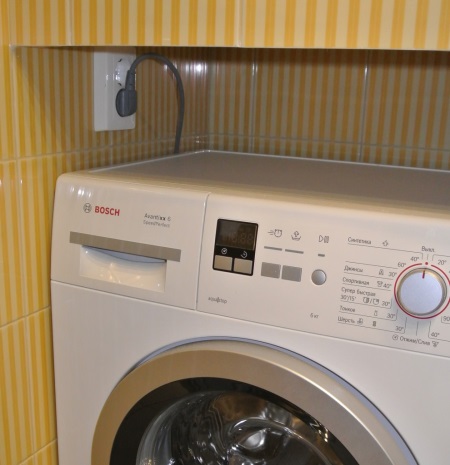
Keep in mind that by using adapters and extension cords, you are lowering your appliance's protection rating and increasing the risk of fire. At the end of the washing machine from the network should be unplugged.
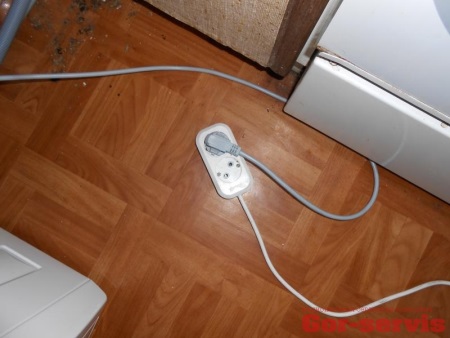
The bathroom is quite a hazardous area in terms of electrical shock, so you should install a circuit breaker to increase safety. Because of the humid air, the wet floor, the large number of pipes and appliances, the bathroom is not an electrically safe place.
If installation in other rooms is not possible, the washing machine in the bathroom is advised to install on a rubber mat, and the housing must be grounded.
Water supply: hot or still cold
If you bought a new machine to replace the old, then tie into a pipe already there and need only screw the hose to it, and then open the crane. When installing a washing machine in the apartment for the first time will have to deal with the creation of the necessary tapping.
The easiest option will be a separate tap with a faucet. It is simplified by the use of tees for any pipe. When buying a tee, consider the pipe diameters and type of threads. Before connecting it is important to shut off the water.
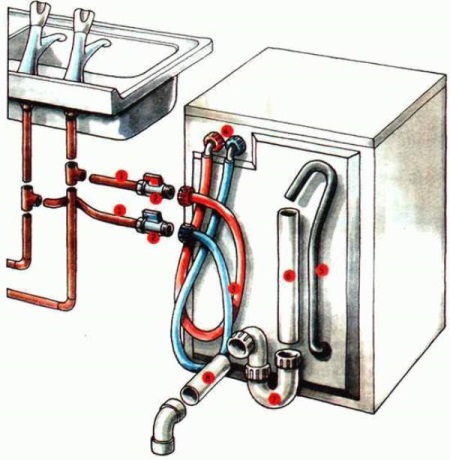
For greater reliability, it is recommended to secure the hose. By the way, if the hose in the set will be short, you can easily buy a longer version. Experts advise to move the faucet to the open position only when washing. This will protect against possible leaks.
Many models of machines can be connected to the hot water supply, but the advantages of such a choice are few, because each machine is equipped with a heating element. Among the disadvantages are the high contamination of hot water and its increased hardness. This will lead to greater consumption of laundry detergents and frequent cleaning of the filter. In addition, the connection to hot water eliminates the possibility of delicate washing of things.
Connecting the drain
This manipulation requires a siphon, to which a hose is connected after installation. The drain can be connected to the sewage system or lead into the bathroom / toilet. The second option can not be called practical, especially with a large family. Taking the hose into the bathroom, you will always have to control its position, because at high pressure, it can break away from the wall, which will lead to flooding the neighbors.
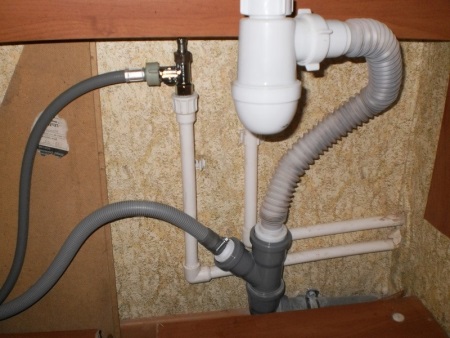
However, the direct connection to the sewer riser involves more complicated work. In addition, for the duration of these works will have to negotiate with the neighbors, limiting their use of the riser. The best option would be to organize a drain into one of the pipes that come to the main riser. It is important that the hose for the drain has a secure attachment, eliminating the risk of leaks.
Connecting the washing machine
This task requires a very responsible approach and is the most difficult stage. Usually modern household appliances are well protected from current and grounded, but reinsurance will not be superfluous. Remember that grounding a machine to a battery or water pipe carries a great deal of danger.

A separate outlet is required for the machine to make it safer to use. Such an outlet must have special water protection as well as a grounding feature. Conventional outlets are considered dangerous for washing machines because they are only rated at 6A. A washing machine consumes more and requires a 16A socket. A socket made of plastic will be especially unsafe, while the ceramic inside makes it a safer option.
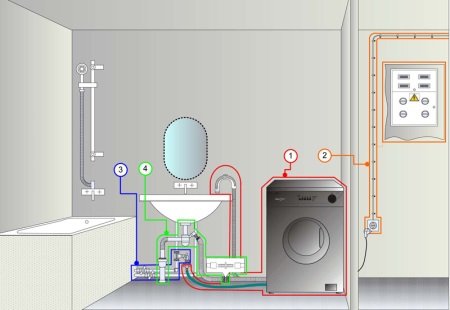
Once you know the maximum power consumption of your new machine, relate these parameters to the capacity of your electrical wiring. It's a good idea to run a separate line to the machine with an RCD so that turning on the appliance won't de-energize your home. To reduce the risk of electric shock, install a RCD correctly. Such a device de-energizes the electrical circuit, so it is considered the best protection against electric shock. It is best not to install it yourself, but have it installed by a professional who can select the right model and increase your electrical safety.
Test Washing
The final stage of the installation of the machine is a test wash. It is carried out without items, that is, idle. A small amount of powder is loaded into the machine in order to get rid of small debris and grease. Such a wash will show how quickly the water is drawn in the machine, whether water heating is normal, and whether the drain is working correctly.
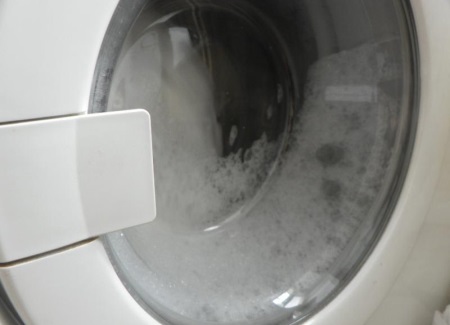
Before starting the machine for the first time, carefully read the instructions supplied with the appliance. In this way you will exclude possible breakdowns due to carelessness.
Before washing, make sure that the machine is level. If the machine wobbles, you need to adjust the feet. Plug the machine in and open the faucet (if there is one on the hose). All the time the machine is running, check its connection to the water supply and the condition of the drain hose. If leaks or extraneous sounds are detected, the machine is turned off and check the places of leakage, the tightness of the gaskets and the condition of the drains.





My electrical wiring did not hold the washing machine. I'm going to have to redo everything.